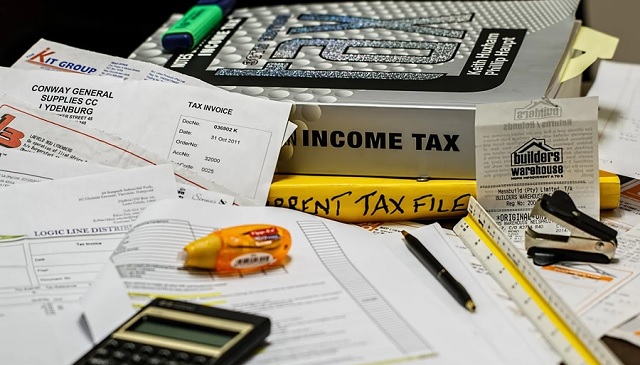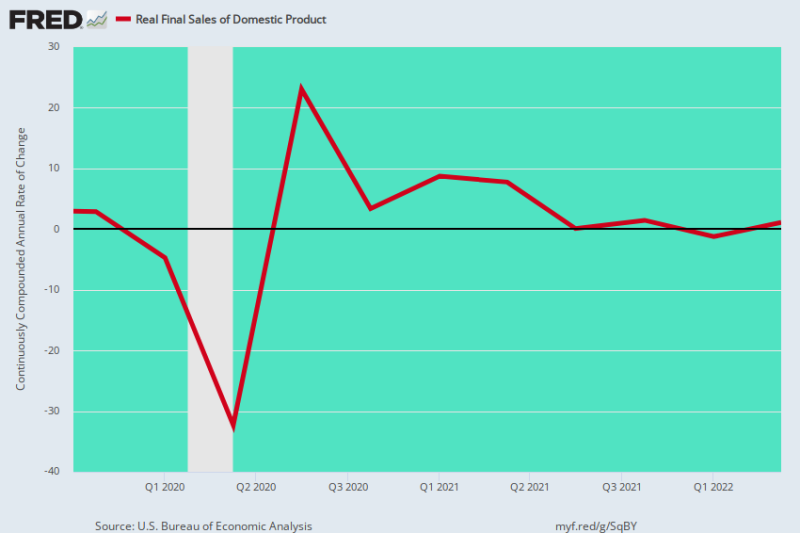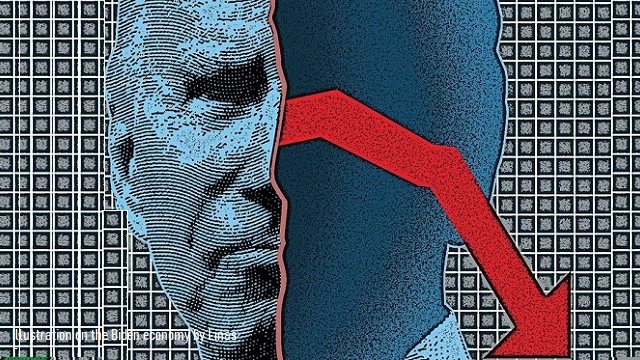The FBI has raided Donald Trump’s home in Florida and opened a private safe, hanging around for hours looking for classified material that might be there. They were likely looking for items that Trump believed he had declassified – the president can do this with anything – but is still holding in his possession.
Top officials of the National Archives, the DOJ, and the FBI believed otherwise and thus sought the search warrant. If the New York Times is correct, then, this is really about state secrets. Trump wanted them public. Others inside the deep-state machinery disagreed.
The scene in Mar-a-Lago, Florida, gives rise to images of societies without law and constitutions, places where regimes are merely juntas seeking plunder and revenge. In this case, the problem is complicated by a mass administrative state apparatus that lives outside the democratic process.
“Aides to President Biden,” reports the Times, “said they were stunned by the development and learned of it from Twitter.” This is likely true. But it gives rise to the more fundamental question: who is actually running the government?
If we didn’t before realize the extent of the multivariate crisis gathering all around us, now is the time. It’s a time for analysis and understanding. It’s also the time to make a decision concerning what we are all going to do about it.
Even those of us who are not fans of Trump – I wrote one of the first articles from 2015 warning against his ideological leanings which later become a full book – see the deeper implications. The betting odds favor him for the presidency in 2024. Someone somewhere wants to make this impossible. So all the forces of the administrative state – the actual rulers of this country – have coalesced around crushing him and his legacy, Soviet like.
In the background of all of this is the real struggle that will define American politics for years to come. Two weeks before he left office in 2020, Trump issued an executive order that would have put a major dent in the power of the administrative state in this country, taking the first steps toward returning government to the people after a century in which it gradually slipped away.
In some people’s view, this is intolerable.
Trump, for all his failings, among which was green-lighting the lockdowns that started this social and economic crisis, has become over time a symbol of resistance. The raiding of his private home sends a message about who is in charge. It’s a warning for everyone. An intimidation tactic.
We are used to this but we should not become so.
Biden has once again declared a national emergency in the name of virus control. Such a declaration effectively enshrines the permanent bureaucracy to rule the country at all levels in whatever ways they desire, at least until courts stop them. The extension of the declaration hardly made the news.
Have we forgotten what normalcy is? It was only three years ago. Yes, there were political arguments and enormous problems but it still felt like a nation of laws with a government subject to the people.
Already, there was something in the air in mid-March 2020, something that suggested that everything was changed. Governments all over the world dared to do the unthinkable, partly under the influence that happened in the US, and under a Republican administration. Countless millions found themselves locked in their homes. The churches were forcibly closed. Businesses and schools too.
You know the story. It was not only a sweeping use of state power without precedent. It foreshadowed dark times ahead. Here we are two-and-a-half years later and the state is on the march in ways we never imagined possible three years ago. The raiding of Trump’s home is but a sign and symbol: none of our homes are safe. And haven’t been for years now.
Even now, in the land of the free, people are being pressured to accept the shot or get fired. We all have unvaccinated friends who want to visit us but cannot because the US government blocks them. Our health authorities have only expressed regret in one area: for not having locked down more. And they are creating a bureaucratic machinery to make doing so next time more ferocious and better enforced.
All of this is taking place without a scrap of evidence that any of it makes any scientific and/or medical sense. The scientists who resist have been canceled. Only one view is permitted to ascend. Everyone with doubt is being marginalized and silenced.
Congress itself became addicted to authorizing trillions in spending, and they keep doing it again and again. This adds pressure on the Federal Reserve to enter the markets and buy the resulting debt with freshly printed money just as rates are being pushed up to clean up its disastrous balance sheet. No one knows, least of all the Fed, how long this grueling inflation will continue but regardless, the damage is done.
The labor markets, despite the propaganda from the White House, reveal alarming weakness. Fewer full-time jobs. More part-time jobs. More people with two jobs. And fewer workers overall, as labor-market participation and worker/population ratios fall and fall. Not only have these markets not recovered from lockdowns. The trends are getting worse, with fully one million dropped out completely from the labor force since March of 2022, which is highly suggestive of a demoralized workforce lacking in ambition and hope for the future.
Wages and salaries in real terms are falling more than the nominal rates can cover. There is a debate about whether we are in a recession because the GDP has fallen for two straight quarters. But looking at the broad trends, there can be no mistaking what is happening. American prosperity is fundamentally threatened. The relationship between freedom and prosperity is one of the most well-established truths in economic literature. It should not be surprising that both decline in tandem.
Complain too much and you will find yourself without a voice on social media. The tech companies developed a deep relationship with the administrative state over the last two years, corresponding with each other, sharing insights, making enemies lists, and silencing dissidents of all sorts.
Clearly, the lockdowns did not achieve the goal, as the virus came and has gradually become endemic regardless of external interventions including mass vaccination mandates. What they did do was test society’s tolerance for despotism. Tragically, they got away with it all, much more easily than most of us might have expected.
Even now, even though the ruling class has never been less popular with the public, too many have adapted to the new normal. For many people, this is by necessity: what, after all, can anyone really do when freedom is slipping away and even the core functioning of civilization (safe streets, vibrant cities, class mobility) is something we can no longer take for granted?
Let history record that lockdowns triggered this. All of it. Yes, there were problems before but they seemed within the realm of fixable. There appeared to be in the old days (three years ago) some relationship between public opinion and regime priorities. That was blown away with lockdowns. Now it is no longer clear whether and to what extent public opinion matters at all to the masters and commanders of our societies. They are leading us to ever greater crises and yet we feel powerless to do anything about it.
In the most incredible of ironies, it was Trump himself, now targeted for destruction by the bureaucrats he sought to control, who enabled this in the dreadful year of 2020. Realizing but never admitting his error, he flipped in the other direction late in the season, arguing for openness and normalcy. But it was too late. He already lost control, as Deborah Birx’s book makes clear. The deep state that he had loathed needed to prove its hegemony. This raid on his own home underscores the point.
One read of history is that such times lead inexorably to the forward march of tyranny. Certainly, interwar political history teaches us this. The crisis in Germany began in an economic crisis that cried out for a strongman, but Germany was hardly alone in this. The same inexorable push toward centralization and against freedom took place the world over in these horrible years: Spain, Italy, France, China, and the US.
Read the popular and scholarly literature from the early 1930s: freedom and democracy was out and central planning was in. I read all of this in college and was grateful that those days were gone forever. We are so much more enlightened now! How wrong I was. The same themes are back again today as entrenched elites clamor to hold on to power regardless of public opinion.
In the 1930s, the extremist political left threatened many countries and the extremist political right arrived to prevent that from happening and then erected their own despotisms, always under the cover of emergency. It became a kind of civil war between two opposing camps with their own plans for people’s lives. Freedom was lost in the struggle.
We had hoped those days were long behind us. But the allure of power has proven too tempting for the worst among us. We are all watching as all the things we love – the way of life that many generations have fought to protect – are being swept away. And it is happening with not nearly enough explanation or protest.
These are not the most terrifying times in history but they are among the most terrifying in our lifetimes in the West. Where are the parties and movements that defend freedom as a first principle? Where are the successors to Voltaire, Locke, Goethe, Paine, and Jefferson, among the many great thinkers who sacrificed so much for the liberal vision of a social order in which people manage their own lives?
Such people are here, many of them writing for Brownstone among other venues, and producing books and podcasts to get around the opinion cartel being built by censors public and private.
What difference can they make and how? This much is true: what man has made, man can unmake and make something new: a new Magna Carta, whether formal or de facto. The urgency has never been more intense. A state without an acquiescing populace is powerless in the end. But not without struggle. And that struggle is ultimately an intellectual one. It’s about what we believe and what kind of society we want to live in.
Our prayer today should be for freedom above all else, a society and a world in which powerful elites do not rule the rest of us and forever fight amongst themselves for the right to do so, with the people deployed as fodder in their struggles, and while hope and prosperity slip ever deeper into memory.
These are very dangerous times, with a toxic mix as a backdrop: a growing economic crisis, a spitefully supercilious ruling class, and a vengeful administrative state determined to crush all enemies before it. Something has got to give. May the USA defy the historical odds, find its way back to simple liberty, and begin to restore what has been lost so dramatically and so quickly. Otherwise, all truth will be declared a state secret and our homes will never be safe from invasion.
*****
This article was published by The Brownstone Institute and is reproduced with permission.
TAKE ACTION
The $739 billion Inflation Reduction Act of 2022 being pushed through the U.S. Senate to be passed by reconciliation (50 votes plus the Vice President) before the upcoming August recess is a threat to America’s economy and the well-being of all Americans. The article above makes clear that Senator Kyrsten Sinema is the one Democrat vote that America is looking at. She alone can stop this legislation. Please contact her at her office locations in Washington, D.C. and in Arizona by phone and letter. Click the red TAKE ACTION link below for Senator Sinema’s contact information.
Although Senator Mark Kelly is a do-as -Chuck Schumer- tells-you-to-do partisan shill, contacting him may be helpful given his significant vulnerability in the November general election. His contact information is also found at the TAKE ACTION link below. We suggest that copying him on your letter to Senator Sinema may possibly have some impact on his voting behavior. Calling his office is also important – the staffs do score the relative positions of constituents and this too may influence the voting behavior.














